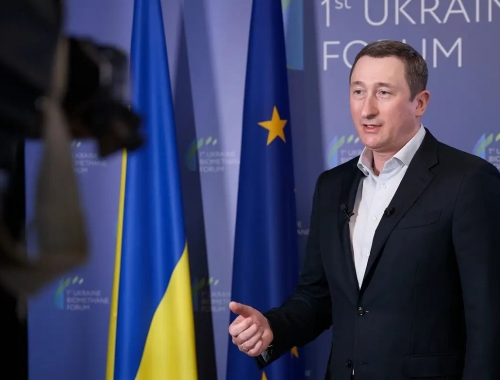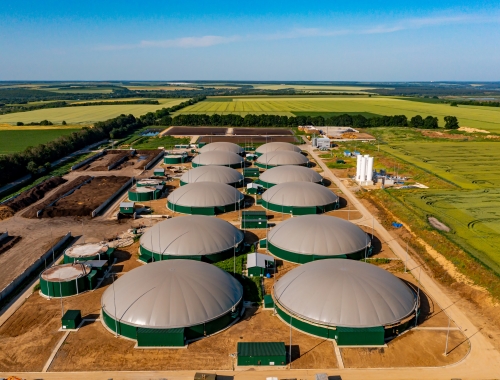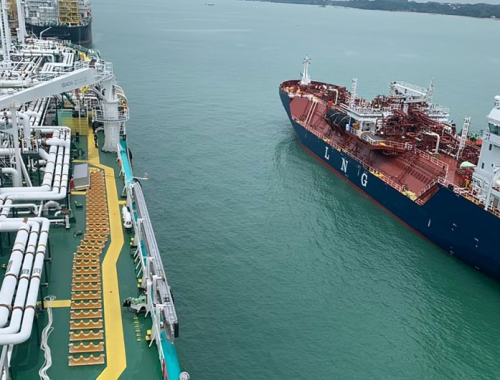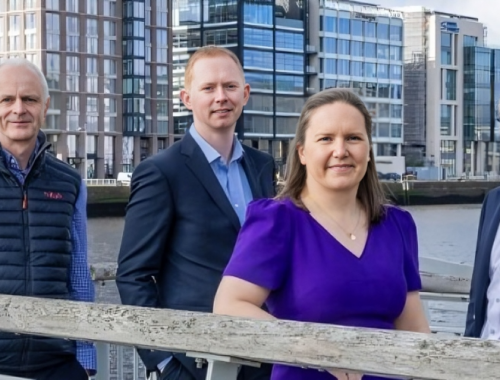EU expands funding for CO2 capture projects
SUMMARY
The European Commission (EC) has selected a number of carbon capture projects in the third round of funding under the EU’s Innovation Fund. Many of the pre-selected projects have the potential to create synergies between heavy industry and the natural gas sector.
By Andreas WalstadPOSTED IN:
In July, the European Commission announced it would allocate over €3.6bn ($3.9bn) in grants to 41 shortlisted large-scale clean tech projects under the EU’s Innovation Fund. This was the third round of funding, with the EC having allocated a total of €2.9bn to 23 projects in the previous two rounds. For the third call, the EC received 239 applications for funding.
The EU’s Innovation Fund is made up of revenues from auctioning carbon allowances under the EU’s Emissions Trading Scheme (ETS). The fund’s revenue is estimated to be about €40bn until 2030, meaning it can help many decarbonisation projects to get off the ground although competition for funding is fierce.
The exact amount of funding for each project has not yet been disclosed, but further details are expected by the end of the year. All pre-selected projects in this round are expected to enter into operation before 2030.
The Innovation Fund does not support the use, transportation or production of natural gas. However, it does support carbon capture and storage (CCS) and carbon capture and use (CCU) projects where CO2 may originate from natural gas.
To this end, carbon capture projects were well represented in the latest round, stretching from southern to northwest Europe. According to the EC, all Innovation Fund projects awarded or pre-selected for grants so far would cover 21% of the CO2 storage target under the proposed Net Zero Industry Act (NZIA). NZIA sets a target of 50mn tonnes of annual CO2 storage capacity by 2030.
Among the CCS projects in the third call are Heidelberg Materials’ GeZero where the plan is to fully decarbonise cement production at the company’s Geseke plant in North Rhine-Westphalia, Germany. The aim is to capture 700,000 t of CO2 annually from 2029 to produce decarbonised cement and clinker.
The synergies with the natural gas industry are palpable as project partner Wintershall Dea will be responsible for the permanent storage of the CO2. Once captured, the CO2 will be transported to Wintershall Dea’s distribution hub in Wilhelmshaven, according to plans. From there, it will be transported via ship or pipeline to offshore storage sites in the North Sea.
A CO2 rail-loading station to transport captured carbon to a permanent CO2 storage site are also part of the project. The CO2 transportation concept is Germany’s first railway-based, large-scale CO2 logistic value chain. This bridges the time until CO2 pipelines are available, according to Heidelberg Materials.
“To create further synergies, GeZero will also act as a reception hub for local, smaller CO2 emitters, giving them access to the intermediate storage and rail loading infrastructure,” the company said in a statement.
A spokesperson for Heidelberg Materials told NGW that the total investment for the project will be between €400-500mn.
“We expect the agreement [with the EU Innovation Fund] to be signed at the end of the year - then we will also be able to give more details on the amount of funding,” she said.
The spokesperson adds that the final storage location for CO2 is not yet selected and contracted.
“It is part of the detailed engineering and development work that will be executed in the frame of the project supported by the EU Innovation Fund to conclude this before the Final Investment Decision (FID) will be taken. Yet, the options we have described in the Innovation Fund proposal have been reviewed by the EU experts, and the selection for Grant Agreement preparation is a clear signal of trust in the whole proposal including the storage concept.”
Mediterranean storage - but where?
Two of the CCS projects pre-selected for funding involve storing the CO2 in the Mediterranean. One of them is TITAN Group’s IFESTOS large-scale carbon capture project in Greece.
IFESTOS involves the construction of a large-scale carbon capture facility at TITAN’s flagship Kamari plant near Athens. According to plans, TITAN will be producing about 3mn t/yr of low-carbon cement to serve growing demand for ‘green construction’ in the metropolitan area of Athens and beyond.
TITAN says the captured CO2 will be liquefied and transported to a permanent storage site in the Mediterranean, but has not shared any specific details on where reservoirs will be located.
Meanwhile, Holcim’s KOdeCO net zero project aims to create an end-to-end CCS chain at the Koromacno cement plant in Istria, Croatia which could pave the way for one of the first permanent offshore geological storage in the Mediterranean Sea. The project could be operational and store 360,000 t of CO2 annually by 2028.
Again there are no details available concerning the exact location for CO2 storage. However, storage in other jurisdictions has ostensibly not been ruled out. To this end, a link up with the Ravenna CCS project in northern Italy - which Eni is developing together with grid operator Snam - for storage seems possible, although this has not been confirmed. The Ravenna project will see CO2 captured from Eni’s natural gas treatment plant in Casalborsetti and piped to the Porto Corsini Mare Ovest platform and then injected into a depleted offshore gas field in the Adriatic Sea. The injection volume is modest to begin with, at just 25,000 t/yr, but the plan is to scale up fast. By 2026, the project’s phase 2 will start with a storage injection of up to 4mn t/yr.
Sandra Malovic Vladic, CCS project manager at Holcim Croatia, told a recent conference in Brussels: “Both our storage options are already in some good level of maturity. Unfortunately I cannot tell the names as at this moment of time we have some confidentiality agreements […] if we are going offshore to another country it needs to be fine tuned on government level, on EU level [and] there is the London protocol [The Convention on the Prevention of Marine Pollution by Dumping of Wastes and Other Matter].”
Holcim received funding for two additional CCS projects in the third call: the Go4Zero project in Belgium, which aims to capture and store carbon from Holcim’s cement plant in Obourg and store it offshore, and the eM-Rhone project in France, in which carbon captured from Holcim’s Le Teil cement plant, as well as other industrial plants in France, will be used to produce an estimated 500,000 t/yr of e-methanol.
In a video message posted on August 21, Vincent Michel, programme director for Go4Zero, pointed out that forming partnerships with other specialised companies including Belgian gas TSO Fluxys was crucial in order to handle the CO2 from the plant.
He said: “We cannot do it alone. We are only part of the solution which is the capture, the rest of the chain has to come with partners. First Air Liquide, second the transport with Fluxys and third the terminal in the port of Antwerp. And finally the transport to the sequestration hub and the sequestration itself.”
ENGIE and Carmeuse’s Columbus project was also pre-selected for EU funding in the third call, which complements the support the project has already received through the EU’s Important Project of Common European Interest (IPCEI). Columbus is a Carbon Capture and Utilisation (CCU) project in Wallonia. The project aims to reduce carbon dioxide emissions by turning CO2 released during the lime production process into e-methane. This can be done when the captured CO2 interacts with green hydrogen produced via a 100-MW electrolyser.
The e-methane produced will be high quality and suitable for injection into the national natural gas grid in Belgium, according to Engie.
This renewable e-methane can be used by industrial users or as an alternative fuel in the transport sector. “It doesn’t require any transformation in the customer’s processes or infrastructure as it has the same characteristics as natural gas,” Engie said in a note published on the project’s website.
The total investment cost for the project is over €300mn and it could be operational by 2026.
By the end of this year, the EC will launch the next call for proposals for large-scale projects under the Innovation Fund, with an increased budget of €4bn. It will come as no surprise if several CCS and CCUS projects are shortlisted then too.







